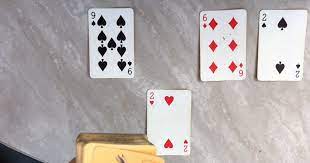Anytime you look at your two $5.50 bank piles in front of you, you can’t help but think, “How to play a pair of tens?” This is a hand that I have played many times in low limit games, and I still play it today in low limit games. The question is, “Why do I play a paired low?”
Let’s look at this hand for a moment to see the exact reasons why you will play a paired low hand before we move on to something else. You are playing the 4th street (or Naga303) of a pot after a flop has been dealt. The flop is 9c-5c-2d. The first play is probably fairly obvious; you need At least one pair of tens to compete, and ideally, you will have two pair or better. If you have a small pair, you should probably check and fold. With two pair or better, you should either stay in the hand and give yourself a chance at winning a larger pot, or try to make a big raise to steal the blinds.
The reasons for playing a paired low is fairly simple. You have an underdog (any ace or face card, but not less than a pair of eights), and you are hoping the board will help you make a hand. Obviously, if you have lower odds than the pot, you should be in the hand; it doesn’t make sense to call a half-pot bet when you only have a single card to win. But if you are going to play a low, you want to win some money by having a hand better than the one you are trying to hit.
With a small pair, you will almost always hit a pair on the flop. If you opponent has a better hand, you should either stay in the hand if you can, or fold. However, you are very unlikely to make a good hand if you have an ace or a face card in your hand, so you are probably better off throwing your hand away and not risking more chips.
When you have a pocket pair in middle position, you are usually going to have to hit the flop to win the hand. If you don’t, you should fold. The odds of hitting your set are about 7:1, so if you have to call a bet on the flop, you will need to hit your set about 7 times to win the hand. This means that if you are up against about 11 other hands, and you have a pocket pair, you will have to hit the flop about 11 times to win the hand.
As the number of remaining players decrease in a stud poker game, it becomes more important to know who is passive/aggressive, so you can adjust your betting tactics against them. If you have a loose player who is passive on the table, you can make a big raise and try to take down the pot pre-flop. If you have a tight player, you can steal the blinds by making a big bet with your hand.
When you are playing at a full table, it can be difficult to tell if your opponents are playing “vineyard cards” or not. Since everyone’s hand is shown, unless you have something really big, it is very difficult to know if they have something or not, unless you have shown you hand already. If you have a loose player who checked the flop, you can call him to catch the flop. If you have a tight player who always raises when there is a bet and bluffs a lot of river bets, you can call him to catch the river.
Make sure you know who you are playing against before you make a decision. Since stud poker is a game based mostly on mathematics, you want to know certain statistical facts about your opponents. Do they play aggressive or like to trap? How often do they bluff? Is a player who bluffs a lot off the hand? Try to get a feel for the playing style of your opponents before you make a decision against them.
